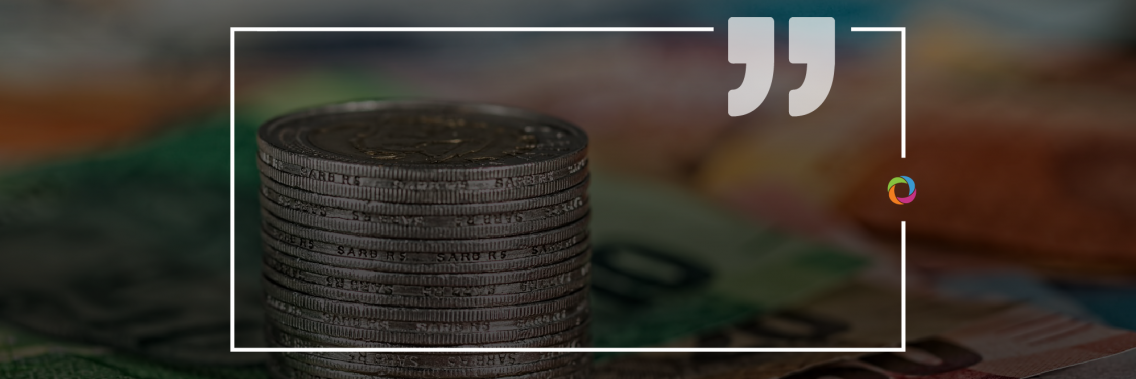Before COVID-19, the global economy stood at $88 trillion. 2020 has seen global growth disrupted by the pandemic with many of the world’s biggest economies in recession. The OECD has revealed that global GDP could recover to pre-pandemic levels by as early as 2021. Could this be possible? Check the opinion of some of our experts.

“The global GDP could well recover to pre-pandemic levels by as early as 2021. Indeed, the global GDP growth estimate for 2020 is -4.5%, whereas it is 5% for 2021, making up for the loss in production. In addition, based on June 2020 forecasts, evidence shows that we are having a V-shape recovery as opposed to a W-shape recovery confirming that the second wave of the pandemic will have a lesser negative impact on world output than the first wave did, thanks to the successfully implemented safety measures as well as to the aid provided by governments. However, the recovery will mostly be based on price rather than on quantity produced. In fact, energy demand will recover to pre-pandemic levels with a two-year lag. Since energy measures economic transformation, adjustment will be price driven. A recovery by 2021 is based on current forecasts with everything else being held constant. Should a delayed recovery scenario occur due to another pandemic hitting hard, global GDP may take several years to recover.”

“Since the end of 2019, the global economy has slowly sunk into recession with the deepest lows in the second quarter of 2020. While economies in the US, Canada and Europe saw the worst of the pandemic’s recession during the lockdowns between February and May, the situation in countries contributing the most to global GDP varied depending on internal and external factors. In that context, the OECD has projected that the global GDP will come back to its pre-pandemic levels as early as 2021. In my opinion, these prospects might be purely quantitative. The most serious impact of the pandemic will weigh on the quality of the global workforce, especially in health, jobs and training. The socioeconomic impact on sectors such as restaurants, hospitality, tourism and international travel will lead to a slow recovery, with three to seven years before most countries see sustainable growth. The trends in global GDP will follow similar patterns. The most unknown impacts of the pandemic on the global economy will concern poverty, resilience and growth sustainability. Also, less is known about how the recovery of leading economies will affect others but, most likely, in most areas things will get worse for a while before they get better.”

“Public health policy has failed in the US and a number of other countries during 2020, with large numbers of unnecessary casualties but fiscal, and especially monetary, policies have generally been much more cogent. Unlike the case in 2008-2009 and afterward, during the pandemic the Federal Reserve and other central banks have maintained adequate, even aggressive, money growth. Consequently, despite some defaults in emerging markets, there is no evidence of credit-market pressure in rich-country money market spreads. Similarly, strong stock market performance reflects confidence that demand (and earnings) will be strong in the years ahead. Short-run demand in the US will be suppressed due to the COVID-19 restrictions at least until a fiscal stimulus is passed. But financial markets are looking past that to a likely vaccine-led recovery in activity later in 2021. Barring an unforeseen international crisis, we can expect a more rapid return to normal than we saw following the financial crisis a decade ago.”

“There are socioeconomic irregularities, anomalies and behavioral economic inconsistencies that will need to be addressed before the constituent vectors of global real GDP could potentially recalibrate with pre-pandemic steady state equilibria. Cognitive macroeconomic imbalance buried in a global experiment of rebound – not recovery – ratchet intervention, non-linear, asymmetric market distortion, moral hazard, free lunch economy – the return of rent seeking and subsidies. Global vigilante economic policy is fueled by socioeconomic lassitude. Fiscal and monetary policy interventions are inefficient and ineffective. Automatic stabilizer and cyclical flows are inverted = T+S+I > G+I+E. Fiscal and monetary multipliers are disabled and unproductive whilst public debt management is non-performing. Data latency and lags in policy recognition, implementation and impulse are accentuated. COVID-19 containment is not a competition so therefore the consideration in the medium term should be concentrated on a framework for informed decision policy making and, in addition, before there is a concerted return to investible, sustainable and consistent real economic growth, a grappling with the following assumptions and socioeconomic and behavioral parameters must be addressed: Recovery v Rebound v Reaction; Recovery Curve Duration – double WW and cycles; Recovery Curve Depth – Fiscal, Monetary, Real, External; Recovery Curve Dispersion – sector & regional level.”

“There is no doubt that the coronavirus, a global health challenge, created both global opportunities and risks. The pandemic impacted negatively on global health as well as created unemployment in different countries of the world. However, COVID-19 redefined how organizations conduct business as many businesses moved online. Further, although coronavirus slowed down economic activities in many sectors of most economies of the world, it became a growth opportunity for businesses in the ICT sector of the global economy. Again, with most economies of the world already relaxing their lockdowns occasioned by the pandemic, it is expected that the global economy will experience recovery that will result in the growth of world GDP beginning in 2021. However, the rate of economic growth will vary from one country to another, depending on how various national governments are able to stimulate growth through expansionary fiscal policies.”

“For developed countries that borrow in their own currency, the use and abuse of expansionary monetary creation to finance a strong fiscal stimulus may give the feeling that everything is over and that these countries are off the hook. The accumulation of liquidity in these economies might have a negative impact on either consumer price increase (inflation) or/and asset price bubbles, the source of a new financial crisis. For emerging and developing countries, the fiscal stimulus financed through money creation is not possible, these increases in money supply will translate into outflows of capital, the depreciation of their national currency and the flight of foreign exchange (monetary approach to the balance of payments). Therefore, the OECD might be optimistic when it says that 2021 is the beginning of the end. Of course, we hope that it is right.”

“While the impact of COVID-19 in 2020 has been enormous, I’d agree that, although unlikely, global GDP could recover to pre-pandemic levels as early as 2021. To understand why, it is important to note that personal savings shot up in 2020, e.g. in the USA this reached a record 33.6% of disposable income. The reasons are twofold. Firstly, people were afraid of what could happen so they saved as much as they could. And secondly, the COVID-19 crisis has had a strong effect in limiting the supply side of the economy (e.g. shop closures, etc.). These two reasons go against each other – since people also lose their jobs. In this context, countries that had fiscal space have introduced large stimulus measures that have increased the money supply. As a result, and despite larger income inequality, there is a lot of cash to be spent at a time when inflation is low overall. If the pandemic ended in a fairly ‘dichotomic’ way, consumer confidence could shoot up and households could start spending very significantly (businesses will likely take longer to start investing since many of them have suffered considerably). The possibility of this scenario happening will largely depend on how long the pandemic lasts, and now that there has been news of vaccines working, how many doses will be available to most of the population in a short period of time.”

“Most countries are still struggling with the coronavirus. Governments are using ‘deficit spending’ to prevent the real sector from collapsing. In parallel, monetary policy intervenes to avoid a collapse of the financial sector. Both interventions have reached a dimension which was unthinkable prior to the corona crisis. The additional liquidity that is being pumped into the system has led to an inflation of financial market prices even in times of declining GDP. It did not, however, manage to stimulate investment into the real sector substantially: the utilization of existing capacities is low and the business environment is regarded as risky. 2021 could be the year of a global vaccination campaign. Nevertheless, the change in real sector conditions will be gradual, so that growth in Western Europe and the USA is more likely to speed up slowly instead of jump-starting quickly.”

“The global pandemic has driven the global economy into a recession, this is undisputed. The fundamentals point to the fact that global countries will all be looking to ignite a rebound of their economies through policy and fiscal support models that we are referring to as economic stimulus packages. This will drive a potential 4th industrial revolution where we will see new economic powers born out of this. Vision 2030 will definitely have new economic global leaders. The economic stimulus packages will most likely drive a heightened rebound of economies to pre-pandemic levels. However the economic losses incurred during the pandemic will take years to recover from and a three-year time lag is not too farfetched. It is also evident that the pandemic continues to wreak havoc both in Europe and America which will further push any return to normalcy a lot further than 2021. The African continent, which has faced a relatively easier COVID challenge, will however lag behind in economic recovery due to the lack of stimulus resources to drive the recovery.”

“The recovery of GDP depends on the strength of that country’s economy which is different for every country. Recovery is possible for those economies that are strong but not possible for those economies with a weak economy base and they may take five to six years to reach the previous stage as they are not organized or mature enough to recover as quickly.”
Check more than 100 job opportunities in the banking sector here.


